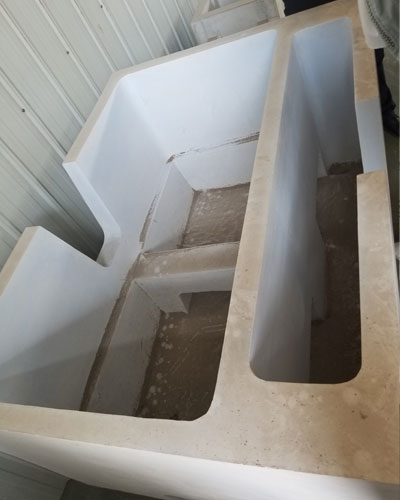Foam ceramic filter for metal casting technology came out in the 1970s and has been widely used in the United States, Canada, Japan, France, Australia and Switzerland. It is the most effective method to remove the inclusions in the aluminum melt. Practice has proved that the foam ceramic filter plate is currently the most effective tool for removing oxidized inclusions in the molten aluminum. The general fiber filtration can only remove large inclusions, while the foam ceramic filter plate can filter out large inclusions and fine inclusions at the same time.
The foam ceramic filter has a multi-layer network and multi-dimensional through holes, and the holes communicate with each other. When filtering, the aluminum liquid carries the inclusions along the tortuous channels and pores, and is directly intercepted, adsorbed, and deposited when it contacts the foamed skeleton of the filter plate. When the melt flows in the hole, the filter plate channel is curved, and the melt flowing through the channel changes the flow direction. Thereby, the inclusions collide with the hole wall anvil and firmly adhere to the hole wall.

The AdTech foam ceramic filter for metal casting is installed in the CFF filter box. The aluminum liquid flows out from the furnace mouth through the filter box, and then enters the distributing plate through the flow groove. With the extension of the filtration time, the inclusions on the surface of the filter plate and the wall of the hole increase, the filtration flow rate decreases.
The choice of filter plate must be based on the flow of aluminum liquid. Secondly, the cleanliness of the melt, the maximum content of inclusions and the total throughput of the melt filter plate should be considered. It is mainly determined by the size and porosity of the filter plate. The larger the porosity of the filter plate, the worse the slag removal effect. For aluminum castings with very strict requirements, you should select filter plates with small pores.

